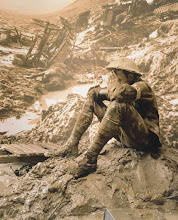
The ceremony in Tel Aviv marked the start of Garin Tzabar (literally, the “Sabra seeds,” or the “Sabra unit”), the program that is facilitating the process that will lead to my enlistment in the Israeli Army in late November. Garin Tzabar is a program run by Israel’s major youth movement (Tzofim) that places groups of new immigrants on Kibbutzim, where they live together for three months before individually serving in the army for a minimum of two years. The program was initially designed to encourage the children of yordim, Israelis that have moved abroad, to serve in the army and remain in Israel.
Three years ago a religious group was added to Garin Tzabar for the first time, located on the religious kibbutz of Tirat Zvi in the Bet She’an Valley. This year there are two religious groups, both of which largely draw their members from new immigrants rather than the children of former Israelis. Despite the growing number of religious participants, the program remains something of an anomaly in the religious world where many motivated youngsters who choose to serve in the army do so through Machal (a program for non-Israelis oversea volunteers who serve for a year and a half) or on their own after making aliyah.

I chose to enlist in the army through Garin Tzabar rather than independently or via Machal for a number of reasons. Machal was out because that program is specifically designed for non-citizen volunteers and my commitment to serve in the IDF is part and parcel of my desire to make aliyah and live in Israel. Enlisting on my own would have allowed me to choose where I would live for my first year in Israel. Moreover I would not have to participate in the many group activities that make up the Garin Tzabar schedule in the months leading up to the army. I could have lived my own life in Jerusalem, helping to advance China-Jewish ties while improving my Hebrew on my own time.
Independence has its place, especially at age 24 when I have grown used to living on my own in cultural meccas like New York, Beijing and Washington. I chose the Garin, however, because I truly preferred everything it offered to the alternative. I want to live in a kibbutz environment. I want to enter the army three months after making aliyah, rather than waiting the eight months or more regularly required of new immigrants. And I want the challenge and opportunity of living within a group setting. Not simply because it will be nice to have like-minded individuals to come home to after tiring weeks in the army. And not only because learning to live with a group can be so important for success in the army.
Ultimately it comes down to my preference to live within a tight-knit community where my life can be as defined by how I give to the group as much as by my own personal development. It is an outlook on life that I have been grappling with for years and that I am not ready to abandon faith in just yet.

My faith in Israeli ceremonies, meanwhile, remains buoyant after the opening event for Garin Tzabar. After throwing food, drinks and shirts at all 250 of us, the Garin staff filed us into a large auditorium for a few speeches. The highlight of the ceremony, however, were the half dozen patriotic song and dance numbers performed by the Tzofim dance group. The dancers were pretty to look at but most of my fellow starry eyed volunteers followed my lead, grabbing some shut-eye for the long road ahead.




Such an amazing blog about the Lone Soldier and I really appreciate you work which you have done well.
ReplyDeleteLone Soldier